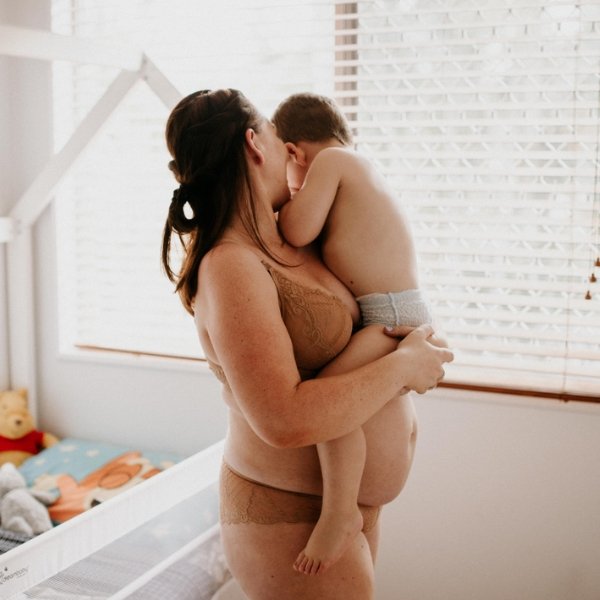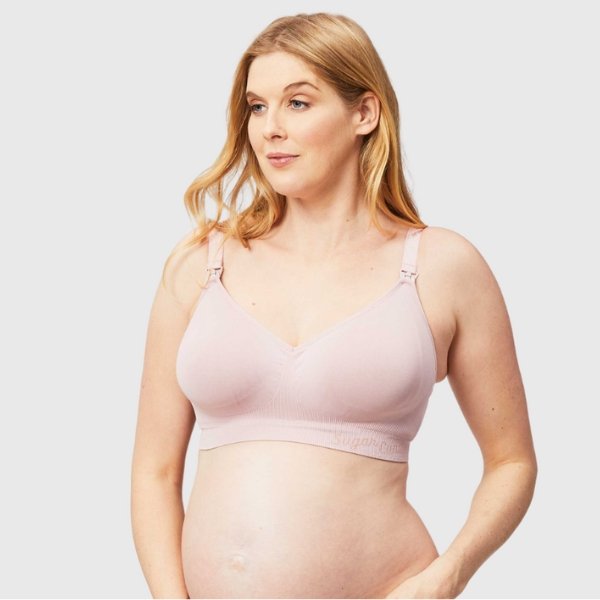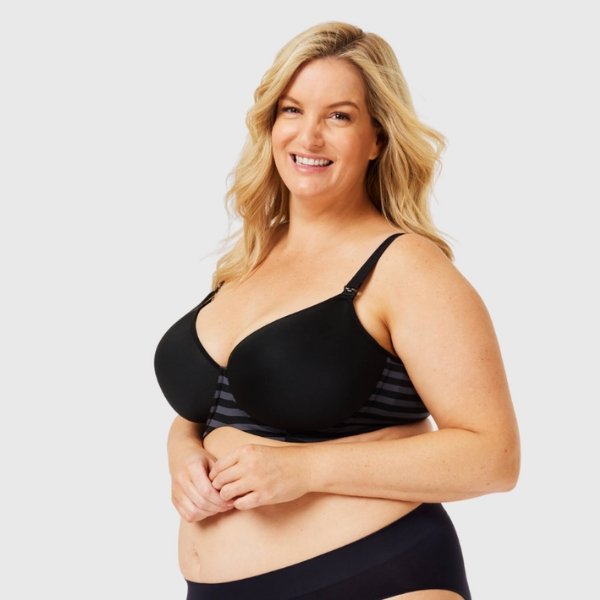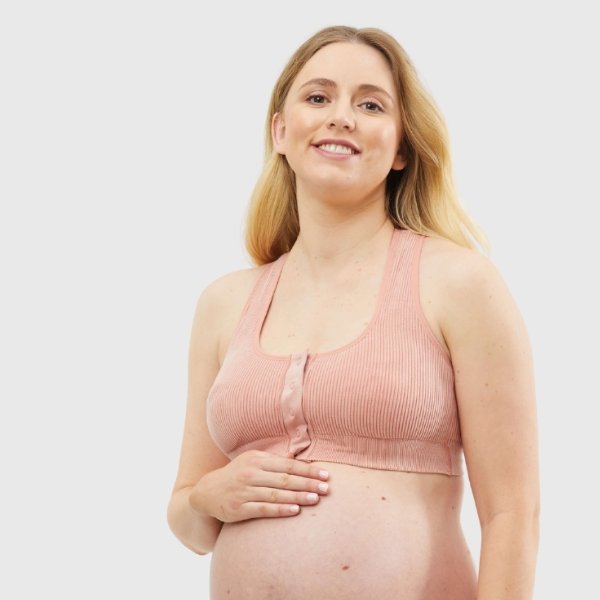When you are pregnant, you have so many different decisions to make, especially if you are doing it for the first time. You might have questions about diets, home versus caesarean, or whether you can keep dyeing your hair, among other things. You will also need to be prepared to spend on essentials for when your baby arrives—prams, car seats, and onesies. Then, there are the things that would be nice, though not absolutely necessary, like baby carriers, organic washes, and night-monitoring devices.
So where does a maternity or nursing bra come in? If you aren’t going to breastfeed, you may wonder if a maternity bra is necessary. But whatever you do, your milk will come in.
The role of a maternity bra is to work with your breast throughout your pregnancy as your body changes, whereas a breastfeeding bra works with your body as it changes during lactation.
Most good brands don’t differentiate between the two now, so you don’t have to buy many different ones. You can extend the life of your maternity bra (worn during your pregnancy), which then doubles up as a nursing bra, the birth of your baby (whilst you breastfeed/ pump).
Your bra size can shift about five times during your pregnancy and breastfeeding experience. A well-designed nursing bra can adjust to these changes in your body and still give you added support and easy access to nurses your way. If you value your breast health and comfort and want support and convenience when nursing, then a maternity/nursing bra is an easy necessity you’ll be glad you had, since you won’t always have to wrestle with your body changes during this time in life when everything, even your body size, feels unsure.

The Physical Changes Your Body Goes Through
When you first become pregnant, your breast size changes, straining your skin and ligaments. Your body temperature, increased breast size, and ribcage will also affect your bra size, comfort, and posture.
These changes occur because your body prepares your milk ducts to nourish your baby once it is introduced to the world. It is important to adapt to these biological changes with the right fabrics and designs that provide protection, support, comfort, and lift.
The Health Benefits of Maternity and Nursing Bras
A bra that acts as a sort of second skin during pregnancy and breastfeeding is the number one gesture of self-care. It will be comfortable and give you enough support that your body can still breathe while adjusting to the new shape that you now have. It will still be soft and senior to wear, supportive, and designed specifically for your body shape now.
Other benefits include:
- They will help avoid sag, especially as the bust gets a lot heavier.
- Protects the ligaments that surround your breast
- Will encourage you to breastfeed as it has the functionality to make it easier
- Have you feeling secure, confident and good about yourself
- Will grow with your changing bust thus reducing the discomfort of it cutting into your breast tissue, back and shoulders
- The wider straps will disperse pressure over your shoulders whilst the band will take much of the support load.
- Will keep you cooler, especially as your body temperature increases during your pregnancy cycle.
What to Look for in a Maternity/Nursing Bra

Key features and why:
- A higher elastane content that enables your bra to stretch and recover through the day to accommodate your breastfeeding sessions of fullness and emptiness.
- Wide straps with minimal stretch. Less stretch means they will dig in less. The wider they are, the more supportive they are.
- Moulded cups provide breast capacity and help prevent pressure and squashed breasts, as well as the dreaded mono-boob look and feel
- If the bra has a wire, ensure it’s flexible and can bend and flex in multiple directions to reduce pressure. The shape should also be wide to enhance this assurance.
- Double layers enhance durability and support.
- If you’re unsure of your size or anticipate fluctuations and growth, it’s advisable to choose a multi-sized bra specifically designed for these stages.
- 6 hooks and eyes allow for rib cage growth and reduction after you’ve had your baby.

In the first trimester, it’s recommended that you wear a seamless bra due to the rapid changes that can occur in your breasts. Any wired products, whether flexible or not, may encroach on your breast tissue.
The second and third trimesters are when there shouldn’t be much increase in your breast tissue, just your rib cage, so you’re fine to wear a flexible wired or more specifically sized cup bra during these stages. Ensure you choose one with six hooks and eyes to accommodate your rib cage expansion.
Towards the end of your pregnancy and immediately after you’ve had your baby when your milk will come in, opt again for a seamless bra that will stretch and grow with your fluctuations. Be aware, your breasts may increase by up to five cup sizes, so don’t be alarmed. This can be incredibly uncomfortable for some, as the skin stretches, your temperature rises, and the weight can strain your back too.
After six to eight weeks of breastfeeding, your milk production should regulate, allowing you to return to a flexible wired or, more specifically, sized cup bra. When you introduce solids after about six months or when your baby sleeps through the night, your bra size may gradually stabilise.

Listening to Your Body
I was always under the impression that morning sickness was my body’s way of reminding me that I was pregnant before the physical appearance of a baby bump. This was nature’s way of encouraging me to take care and avoid certain foods, avoid other non-recommended pregnancy foods or to refrain from doing things that might harm your baby.
The same goes for your bra and how it feels on your body. If you’re experiencing breast tenderness from your bra or your bra feels too tight on your body, making it difficult to breathe or flow blood, it’s a signal from your body or your bra to let you know that changes need to be made to ensure the continued healthy development of your milk ducts.
We all have different preferences, and one person’s perfect may not be another’s. This diversity of needs and sizes has generated a variety of styles and types of maternity and nursing bras that meet every mama’s needs.
- Underband: A well-fitted bra should be adjusted in this order: underband, cups, and straps. The underband should feel like a gentle, secure hug, allowing you to pull it back far enough for about three fingers. Ideally, it should stay nice and horizontal, without riding up your back. If it does, consider going down a band size and up a cup size.
- Cups: Your breasts should fit comfortably within the cups, whether they have wire or not. Ensure the top cup edge has enough stretch so you can fit two fingers comfortably at the edge; this will provide great support.
- The straps: These also should be pulled so they fit snugly enough that you can slide two fingers under the apex of your shoulder. “If you can pull on your strap and like your breasts don’t budge, then you need to tighten them down and possibly a little firmer. Remember that the straps can slip inside the sliders once washed and worn, so it’s a good idea to always map the adjuster positions upon tightening to ensure they’re even and where you’d like them to be.
Conclusion
You have to live with your body, and it’s working really well for you! And so, listen to what your body is telling you. And maybe think, what needs do I have to take care of myself in ways that really feel good? Remember that making the right bra choice isn’t just a decision – it’s part of your self-care during this changing time!


